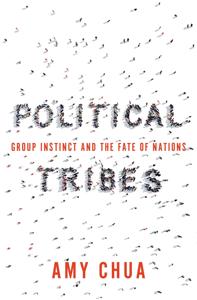
Want to learn the ideas in Political Tribes better than ever? Read the world’s #1 book summary of Political Tribes by Amy Chua here.
Read a brief 1-Page Summary or watch video summaries curated by our expert team. Note: this book guide is not affiliated with or endorsed by the publisher or author, and we always encourage you to purchase and read the full book.
Video Summaries of Political Tribes
We’ve scoured the Internet for the very best videos on Political Tribes, from high-quality videos summaries to interviews or commentary by Amy Chua.
1-Page Summary of Political Tribes
Overview
The book Political Tribes (2018) explains how American elites have neglected the importance of exclusive groups based on religion and ethnicity. These groups can be found both in America and abroad.
Americans understand that their country united people from a variety of ethnic, religious and social groups under one flag. But in many countries around the world, tribal affiliations are still more important than national identity. For instance, in Iraq or Afghanistan, a person may identify as a Shia or Pashtun before identifying himself as an Iraqi or Afghan.
In tribal societies, people are suspicious of those who don’t share their social traits. When one tribe controls the government or economy, they typically exclude members of other tribes. This has weakened society as a whole and made life worse for everyone in that country. American elites have failed to recognize this dynamic in countries with tribal cultures. As a result, US foreign policy has tried to apply American-style institutions such as free markets and democratic governments to other countries where these changes have only made things worse by exacerbating existing tensions and upending entire societies.
In Vietnam, the United States attempted to create a bulwark against Communism by developing the South Vietnamese economy along the lines of free-market capitalism. However, since so much of that economy was already dominated by Chinese people, economic development disproportionately benefited them and fomented anti-Chinese sentiments among ethnic Vietnamese. The American diplomatic and military leaders never understood how their policies had fomented tribal conflict in Vietnam. After that war, the United States continued to interact with other countries without regard to group identities within those populations. In all these cases, they strengthened some groups over others because of their ham-fisted policy that failed to understand local conflicts between different groups.
American elites can no longer ignore the politics of tribalism. In recent years, America has become more and more like the rest of the world in terms of tribal politics. White people are being demonized by liberal pundits and academics for being beneficiaries of a racist system, even when many of them are struggling financially. This resentment among white people is driving political outcomes in America, which will continue to happen if American policymakers fail to understand that race is an important factor behind most political decisions.
Key Point 1: Tribal identities are exclusionary by nature.
Tribal organizations are at the two ends of a spectrum. They can be very inclusive, overlooking differences in ethnicity or religion so long as someone is part of that tribe. At the same time, they can be highly exclusive and distrustful of those who don’t share their background. It’s common for an organization to deny opportunities to people outside its tribe when it has power.
Social discrimination is still a problem in India, even though the government has made it illegal. The caste system is one example of social discrimination in India that still exists today despite many laws against it. In 2016, a student at the University of Hyderabad committed suicide after allegedly being discriminated against by university staff and faculty members.
Key Point 2: For at least 50 years, American elites have ignored tribal identity when dealing with foreign countries.
In Vietnam, Afghanistan and Iraq, the US tried to improve these nations by imposing reforms that would make them more like America. However, there are many tribes in each of these countries with different needs and desires. By trying to impose Western values on those tribes, the United States caused a lot of problems for everyone involved.





